Whether you’re a South African business grappling with the complexities of B-BBEE planning for the first time, or you’re a seasoned campaigner with a number of structured Skills Development programmes under your belt, the prospect of running Learnership programmes will – or at the very least should – be firmly on your annual Learning & Development (L&D) planning radar.
15 YEARS OF LEARNERSHIP LESSONS
Learnership programmes come replete with a range of B-BBEE, tax and SETA-funding benefits which makes them very attractive on paper, but in reality they are lengthy, admin-intensive and demanding programmes. When they are done well, Learnerships provide a wealth of benefits for all involved and can be really powerful drivers of transformation. When poorly implemented or managed, or done for the wrong reasons, they can be painful, costly and demoralising, with the Learners themselves often suffering the most.
Over the last 10 years, Red & Yellow has run dozens of programmes with a wide range of employers, graduating hundred of learners and changing the lives of many more along the way. We are tremendously proud of our Learnership offering and the fantastic clients we work with, but not every programme is smooth sailing.
We’ve learned some very valuable lessons over the years, and we’re going to share 12 of the biggest ones below.
WHAT IS A LEARNERSHIP?
If you’re new to Learnerships and are looking for more foundational guidance on what they are and how they work, we have previously developed a very helpful Learnership 101 Guide just for you.
For purposes of this article, we’ll provide a quick refresher: a learnership is a work-based learning programme that results in an NQF (National Qualifications Framework) registered qualification, directly connected to a specific occupation or field of work. Historically they have been managed by the Sector Education and Training Authorities (SETAs), although accreditations for all SETA qualifications are set to expire on 30 June 2023, with a grace period for enrolments until 30 June 2024.
Going forward, occupational qualifications will be accredited through the Quality Council for Trades and Occupations (QCTO), and the expectation is that the QCTO will be the central Learnership-management body. Under the QCTO regime, Learnerships will comprise three essential components: knowledge (theory), practical training (workplace and simulated workplace training), and External Integrated Summative Assessment. Depending on the credit volume of the relevant programme, learnerships may extend beyond the current, standard 12-month duration of SETA qualifications.
MAKING SURE YOUR LEARNERSHIP PROGRAMME IS SUCCESSFUL
Embarking on a Learnership Programme demands firm commitment from all stakeholders, including Training Managers, Managers/Mentors, and Learners. Training Providers like Red & Yellow have a lot to do too, of course.
We have broken our tips below down into three critical stages in the Learnership Programme journey: Initiating a Programme, Running a Programme and Concluding a Programme. We feel that this provides a very useful structure to work with.
It is important to note that lifelong learning is not just about acquiring new knowledge and skills; it is also about developing a growth mindset and a willingness to embrace new challenges. When we approach new experiences with an open mind and a willingness to learn, we are more likely to succeed and to continue growing and developing throughout our lives.
STAGE 1: INITIATING A LEARNERSHIP PROGRAMME
Tip 1: Brace yourself for a demanding journey
Learnerships can be more admin-intensive and demanding than anticipated, especially for first-time programme managers. Despite the initial hurdles, remember that practice makes perfect. Stick with it, and you’ll notice your programmes becoming smoother with each new one that you run, benefiting both your business and the learners.
But be under no illusions: keeping a group of people focused, motivated and on track over a 12-month period, balancing the demands of studying towards a full qualification, a busy work schedule and all of the other personal ups and downs that affect us all, is never an enterprise that should be taken lightly. It will be tough, but if you’re prepared for it, you’ll be ok.
Tip 2: Prioritise people over points. Always.
While B-BBEE points are crucial, a successful learnership should focus primarily on the training, development, and upliftment of learners. By prioritizing learners’ skills and long-term success, your business can reap substantial benefits, contributing to genuine and impactful transformation.
As a Business School first and foremost, we prioritise the learning experience and educational impact of our programmes as a priority. If our Learners and clients aren’t in a much better position having gone through one of our programmes, then we haven’t succeeded. We start from there, and then wrap the programme in a “Learnership wrapper”, not vice versa. There are many training providers who lead with the points, and care less about the learning experience. Experiences with providers and programmes like these can sour Learnerships for employers and Learners alike, and should be avoided wherever possible.
Tip 3: Secure internal buy-in before recruiting
Engaging in preliminary discussions with senior management, line managers and prospective Learners before recruiting can set realistic expectations and secure crucial buy-in at all levels.. Promoting the programme’s benefits and prospects for Learners internally can ensure enthusiastic sign-ups and maintain motivation during the inevitable challenging periods during the programme.
The greater the buy-in, the greater the prospects of success. Simple.
Tip 4: Recruitment, recruitment, recruitment!
This is hands down our most important tip, and the most crucial one to get right. We’d go so far as to say that 90% of the issues employers experience on a programme can be solved by ensuring that the right people are enrolled on your programme. We can’t emphasise enough the impact that investing time and effort in the recruitment process up front will have in averting problems down the line. Selecting smart, ambitious, growth-minded, resilient learners who can handle the challenges of a year-long programme will ultimately lead to more successful outcomes, and will quickly flip any negative perceptions about Learnerships that you’ve had from past experiences.
STAGE 2: RUNNING A LEARNERSHIP PROGRAMME
Tip 5: Good onboarding and orientation goes a long way
A well-structured onboarding and orientation programme can set the tone for the learnership, equipping learners with an understanding of their responsibilities and the path to success.
Learnerships have some fairly specific requirements (mandated by SETAs), and there is a lot for all involved to assimilate up-front, and so we always insist on a thorough orientation process. And not just for Learners, but for managers, mentors and training managers too. A well-structured orientation process can also help ensure crucial alignment between all involved, and really helps ensure that expectations are managed.
Tip 6: Incentivise performance
Incentives can boost motivation and performance significantly. From financial rewards like vouchers and bonuses to non-financial incentives like extra leave days, travel and conference opportunities, or simple internal praise and commendation, a relatively simple reward system can catalyze commitment and productivity.
Some employers find success with penalties for under-performance, and these can also be powerful motivators. With unemployed learnerships, the prospect of having a stipend paused due to inactivity or deregistration can be a powerful incentive for the Learner to stick with the programme and see it through.
Tip 7: Align performance with personal development plans and KPIs
This one is probably more relevant for employed Learnerships, but aligning performance on the programme with the Learner’s individual development plans and KPIs can help drive consistent progress and make the programme more relevant to their career aspirations. It can also then more closely be linked to general performance-linked incentives and bonuses linked to their employment, including opportunities for salary increases and promotions.
Tip 8: Enlist strong managers/mentors (and support them)
Pair learners with capable, committed mentors who can provide guidance and support. Mentors don’t always have to be senior members; even mid-level or junior employees can be excellent mentors given the opportunity, and this can be an excellent way of providing opportunities for junior talent to get exposure to management. Learnerships are only one-directional development programmes if you approach them that way. They can be far more impactful and meaningful to more people.
Tip 9: Communicate regularly; meet frequently
As with pretty much everything in business, issues start to creep in and compound when communication fails. By establishing regular, clear and transparent communication flows and channels, many issues can be revealed and resolved early before they become more serious. A whole host of other issues and challenges can be resolved simply through conversation and listening. Often, all that a Learner going through a tough spot needs is a sympathetic ear and a few words of encouragement to help get them back on track.
We always look to set up a regular meeting schedule with the training manager, line managers and mentor to ensure that things are proceeding according to plan, and to trouble-shoot and resolve challenges as they arise (which is inevitable).
Tip 10: Digital wherever possible
21st century Learners should be learning in a 21st century manner. Whilst some SETAs still insist on in-person training and paper-based records, learning experiences like this do little to prepare Learners for the increasingly digital and technology-driven world of work. Making smart use of technology wherever possible will help streamline processes, reduce duplication of work and records and bring your training programmes well and truly into the modern age. Consider digitising your Learnership documentation, progress reviews and meetings at the very least to make information easily accessible and up to date, and to ensure your Learners are engaging with digital platforms and channels as much as possible.
STAGE 3: CONCLUDING A LEARNERSHIP PROGRAMME
Tip 11: Don’t withdraw or deregister Learners prematurely
There can often be pressure to remove inactive or underperforming Learners from a programme, and this may very well be commercially necessary where stipends are being paid, but if a Learner persists with the programme, even if they are struggling or struggling to submit or pass their assessments, they are still participants on the programme and they can still be counted towards your Skills Development targets. This is particularly important for employed Learnerships, where salaries are counted.
This certainly isn’t to suggest that there aren’t very good or valid reasons for Learners to be withdrawn or deregistered, but you should always be mindful of the longer-term B-BBEE or SETA-funding implications of doing so.
Tip 12: Keep in touch with your Learners after the programme ends
Employers often forget about the valuable bonus points for absorption that are available once a Learnership finished, but there can often be large time gaps between the end of the Programme and the employer’s B-BBEE verification date, when absorption is calculated. You will need to be able to demonstrate that a Learner is employed (it doesn’t have to be with your business) at the later date, and this can be difficult to do if you’ve lost contact with them.
If you’re really struggling to communicate with your Learners, you can always consider a small incentive for them to send you proof of employment. A small cost for the business relative to the value of the bonus points you stand to earn!


